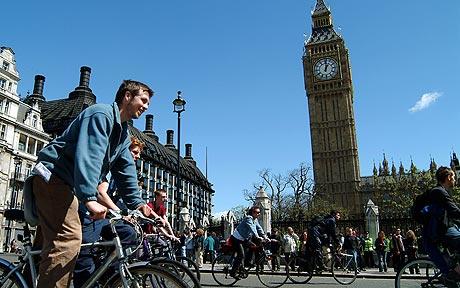A major revival of cycling infrastructure in the outer boroughs of London has been put on hold by mayor Boris Johnson, after having initially praised the move.
The mayor of London, and his predecessor Ken Livingstone, both agreed to aim to reach the proposed 400% increase in cycling by 2025. Recent developments have indicated that things are going in the right direction, with 2003 seeing an introduction of a congestion charge, and the “European style” bike hire made available in 2009.
Indeed, the cycling culture of inner London has improved drastically, where it can often be quicker, not to mention far healthier, to commute by bike than by car, but it is the areas in outer London which currently need the most attention. The majority of cycling trips in the future will have to be made in these areas, so it is essential that the experience of cycling there is a safe one, and not potentially off-putting to the novice.
According to the Guardian, the overall “vision” of the cycling initiative will focus on “the creation of ‘mini Hollands’, to transform conditions in areas of outer London and make safe, pleasant cycling a reality for local people.” Inspired by many European cities, London, being one of the largest cities in the world, realises the sense it makes to develop a similar scheme. But it seems that the scheme is being halted, albeit temporarily.
One obvious reason for this is the severe government cuts being made all over the country; there simply may not be enough money in the near future to fund a better cycling infrastructure. But public interest is being expressed far and wide in the value of investment in cycling.
In Scotland this weekend, thousands of cyclists, novices and seasoned pros alike, are planning to take part in Pedal on Parliament, descending on Holyrood en masse to campaign for better cycling infrastructure, and that the limited resources available will in fact be better spent on a healthier and safer means of travelling.
Certainly from a health perspective, with the current concerns for obesity and widespread lack of exercise, this could be the ideal investment for the governments to make, tackling both health and transport issues at the same time.
Judging from the better records of many other cities in Europe and elsewhere, and the growing expression of interest from the UK public, perhaps it is the best next move for Boris Johnson to reopen the cycling case, and put the limited economy to the best possible use.

